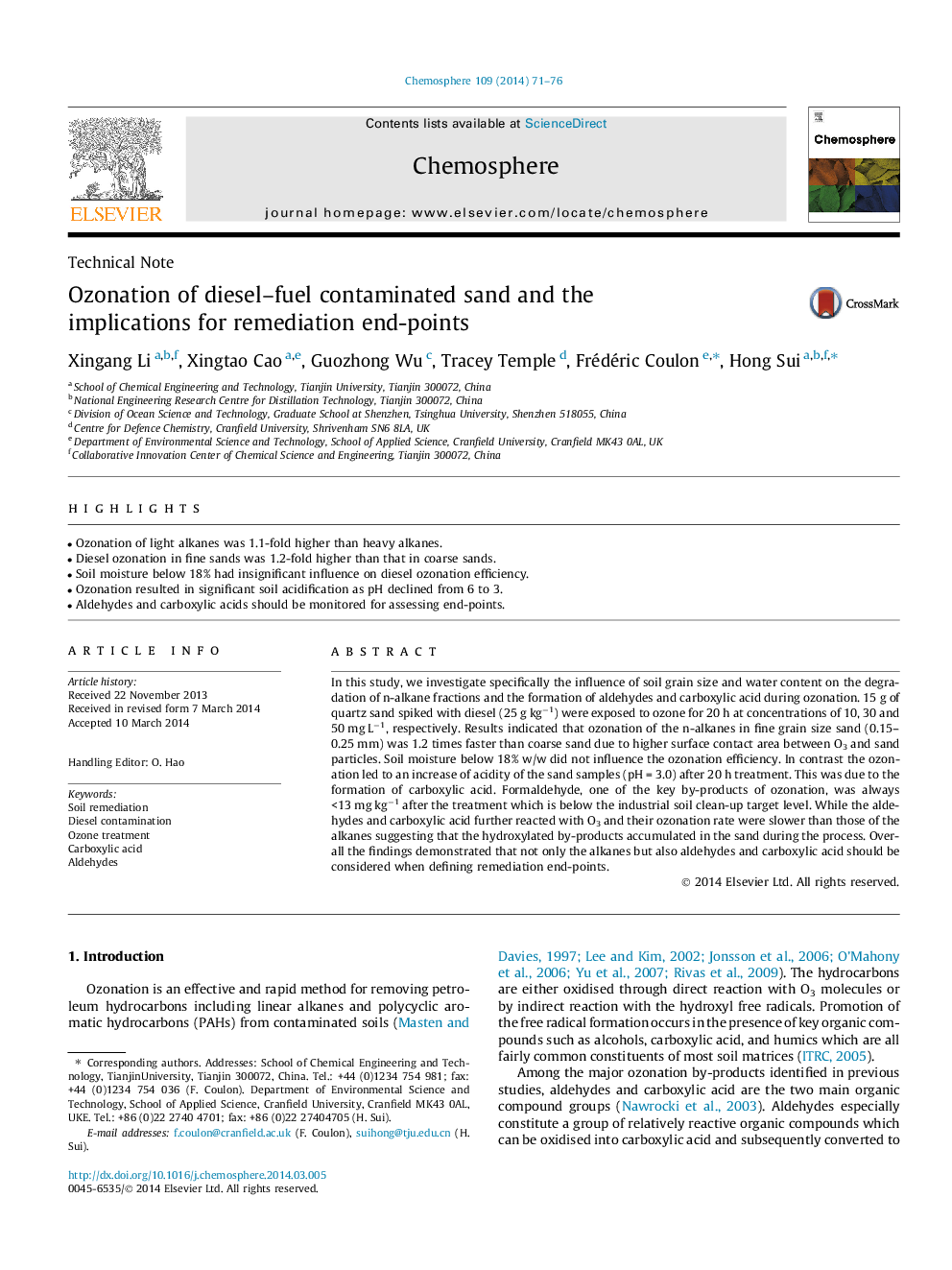| کد مقاله | کد نشریه | سال انتشار | مقاله انگلیسی | نسخه تمام متن |
|---|---|---|---|---|
| 6309057 | 1618862 | 2014 | 6 صفحه PDF | دانلود رایگان |
عنوان انگلیسی مقاله ISI
Ozonation of diesel-fuel contaminated sand and the implications for remediation end-points
ترجمه فارسی عنوان
استحکام شن و ماسه آلاینده دیزل-سوخت و پیامدهای آن برای بهبود نقطه پایان
دانلود مقاله + سفارش ترجمه
دانلود مقاله ISI انگلیسی
رایگان برای ایرانیان
کلمات کلیدی
اصلاح خاک، آلودگی دیزل، درمان اوزون، اسید کربوکسیلیک، آلدئید،
موضوعات مرتبط
علوم زیستی و بیوفناوری
علوم محیط زیست
شیمی زیست محیطی
چکیده انگلیسی
In this study, we investigate specifically the influence of soil grain size and water content on the degradation of n-alkane fractions and the formation of aldehydes and carboxylic acid during ozonation. 15 g of quartz sand spiked with diesel (25 g kgâ1) were exposed to ozone for 20 h at concentrations of 10, 30 and 50 mg Lâ1, respectively. Results indicated that ozonation of the n-alkanes in fine grain size sand (0.15-0.25 mm) was 1.2 times faster than coarse sand due to higher surface contact area between O3 and sand particles. Soil moisture below 18% w/w did not influence the ozonation efficiency. In contrast the ozonation led to an increase of acidity of the sand samples (pH = 3.0) after 20 h treatment. This was due to the formation of carboxylic acid. Formaldehyde, one of the key by-products of ozonation, was always <13 mg kgâ1 after the treatment which is below the industrial soil clean-up target level. While the aldehydes and carboxylic acid further reacted with O3 and their ozonation rate were slower than those of the alkanes suggesting that the hydroxylated by-products accumulated in the sand during the process. Overall the findings demonstrated that not only the alkanes but also aldehydes and carboxylic acid should be considered when defining remediation end-points.
ناشر
Database: Elsevier - ScienceDirect (ساینس دایرکت)
Journal: Chemosphere - Volume 109, August 2014, Pages 71-76
Journal: Chemosphere - Volume 109, August 2014, Pages 71-76
نویسندگان
Xingang Li, Xingtao Cao, Guozhong Wu, Tracey Temple, Frédéric Coulon, Hong Sui,
